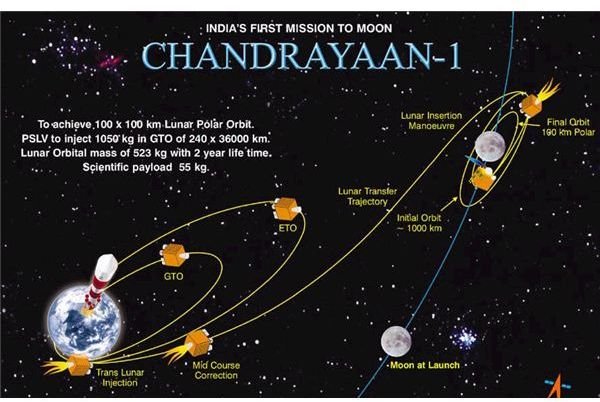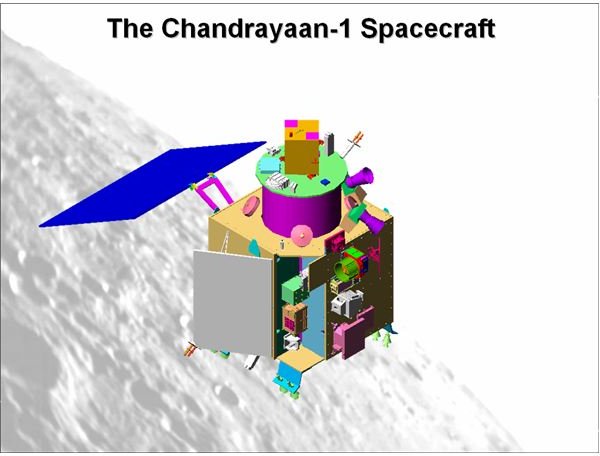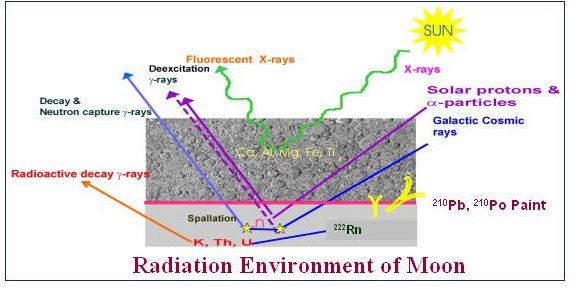Chandrayaan-1 Mission to the Moon: Details and Facts on India's First Lunar Mission
Introduction to the Chandrayan-1 Mission
Being one of the very few countries in the world to have a spacecraft launching facility, India’s space program touched new heights with its Chandrayaan mission. India’s space agency, ISRO, moved a step further into space by reaching the moon with a spacecraft. The lunar mission aims to study the moon in multiple wavelengths. However, this will be an unmanned mission and the objectives are purely scientific. The mission endorses participation of groups from 9 different countries.
Mapping the Moon and Other Scientific Objectives
The Chandrayaan-1 mission is aimed at high-resolution remote sensing of the moon in visible, near infrared(NIR), low energy X-rays and high-energy X-ray regions. Specifically the objectives will be:
- To prepare a three-dimensional atlas (with a high spatial and altitude resolution of 5-10m) of both near and far side of the moon.
- To conduct chemical and mineralogical mapping of the entire lunar surface for distribution of elements such as Magnesium, Aluminum, Silicon, Calcium, Iron and Titanium with a spatial resolution of about 25 km and high atomic number elements such as Radon, Uranium & Thorium with a spatial resolution of about 20 km.
Simultaneous photo geological and chemical mapping will enable identification of different geological units, which will test the early evolutionary history of the moon and help in determining the nature and stratigraphy of the lunar crust.
Mission Objectives
ISRO aims to achieve the following during the Chandrayaan mission:
- To realise the mission goal of harnessing the science payloads, lunar craft and the launch vehicle with suitable ground support systems including DSN station. DSN is a deep space network tracking station to track and communicate with interplanetary spacecraft missions.
- To realise the integration and testing, launching and achieving lunar polar orbit of about 100 km, in-orbit operation of experiments, communication/ telecommand, telemetry data reception, quick look data and archival for scientific utilization by identified group of scientists.
Scientific Payload
There are a total of 11 scientific payloads on board the Chandrayaan mission.
- Terrain Mapping stereo Camera (TMC)
- Hyper Spectral Imaging camera (HYSI)
- Lunar Laser Ranging Instrument (LLRI)
- High Energy X-ray spectrometer (HEX)
- Moon Impact Probe (MIP)
- Chandrayaan-1 X-ray Spectrometer (C1XS)
- Near Infra Red spectrometer (SIR-2)
- Sub KeV Atom Reflecting Analyser (SARA)
- Radiation Dose Monitor Experiment (RADOM)
- Miniature Synthetic Aperture Radar (MiniSAR)
- Moon Mineralogy Mapper (M3)
The first five payloads have been indigenously developed by Indian scientists. The rest have been chosen from various proposals from all over the world.
Spacecraft
The spacecraft used for Chandrayaan - 1 is cuboidal in shape with side lengths of approximately 1.5 m. It weighs 1304 kg at launch and 590 kg at lunar orbit. The spacecraft is three axis stabilized using two star sensors, gyros and four reaction wheels. the spacecraft records data from the 11 scientific payloads and transmits them to the ground station using a parabolic antenna. The launch vehicle is the PSLV-C11 (polar satellite launch vehicle) with a lift off mass of 316 tonnes.
Read about the results of the Chandrayaan mission.
Images


References
1. https://www.isro.org/chandrayaan/index.htm
2. https://en.wikipedia.org/wiki/Chandrayaan
3. Images:
